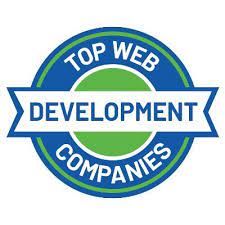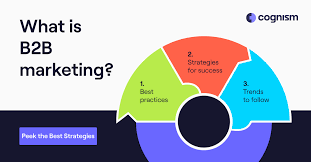The Art and Science of Industrial Design
Industrial design is a fascinating field that combines creativity, functionality, and aesthetics to create products that enhance our daily lives. It is the art and science of designing products that are not only visually appealing but also practical and user-friendly.
Industrial designers work at the intersection of art, engineering, and business. They consider factors such as usability, ergonomics, materials, manufacturing processes, and market trends to develop products that meet the needs of consumers while also being cost-effective to produce.
One of the key principles of industrial design is form follows function. This means that the design of a product should be driven by its intended purpose and functionality. A well-designed product not only looks good but also performs its intended task efficiently.
Industrial designers use a variety of tools and techniques to bring their ideas to life. From sketching and prototyping to computer-aided design (CAD) software and 3D printing, they leverage technology to iterate on designs quickly and effectively.
Successful industrial design requires a deep understanding of human behavior, market trends, materials science, manufacturing processes, and more. It is a multidisciplinary field that demands creativity, problem-solving skills, attention to detail, and a passion for innovation.
From everyday objects like smartphones and furniture to complex machinery and medical devices, industrial design plays a crucial role in shaping the world around us. By blending artistry with functionality, industrial designers create products that not only meet our needs but also delight us with their beauty and elegance.
Whether you realize it or not, industrial design influences nearly every aspect of our lives. The next time you pick up your favorite gadget or sit in a stylish chair, take a moment to appreciate the thoughtfulness and expertise that went into its design.
Understanding Industrial Design: Key Concepts, Tools, and Career Insights
- What is industrial design and what does an industrial designer do?
- How does industrial design differ from other design disciplines?
- What are the key principles of successful industrial design?
- What tools and technologies do industrial designers use in their work?
- How important is user experience (UX) in industrial design?
- What role does sustainability play in modern industrial design practices?
- How can someone pursue a career in industrial design?
What is industrial design and what does an industrial designer do?
Industrial design is a dynamic field that encompasses the creative and strategic process of developing products that are both visually appealing and functional. An industrial designer is responsible for conceptualizing and designing products that meet the needs of users while considering factors such as usability, aesthetics, ergonomics, and manufacturing feasibility. They blend artistry with technical expertise to create innovative solutions that enhance the user experience and contribute to the success of a product in the market. Industrial designers play a crucial role in shaping the way we interact with everyday objects, from electronics and appliances to furniture and vehicles, by focusing on creating products that are not only beautiful but also practical and user-friendly.
How does industrial design differ from other design disciplines?
Industrial design stands out among other design disciplines due to its unique focus on creating products that seamlessly blend form and function. While graphic design emphasizes visual communication, interior design focuses on spatial aesthetics, and fashion design revolves around clothing and accessories, industrial design encompasses a broader spectrum of physical products. Industrial designers consider not only how a product looks but also how it works, feels, and interacts with users. They delve into the practical aspects of manufacturing processes, materials selection, user experience, and market trends to ensure that the final product is not only visually appealing but also user-friendly and commercially viable. This holistic approach sets industrial design apart as a discipline that marries creativity with functionality in a tangible and impactful way.
What are the key principles of successful industrial design?
When exploring the key principles of successful industrial design, it becomes evident that a harmonious blend of functionality, aesthetics, and user-centricity is paramount. Industrial design thrives on the principle that form follows function, emphasizing that the design of a product should be driven by its intended purpose and usability. Additionally, attention to detail, innovation, and a deep understanding of materials, manufacturing processes, and market trends are crucial elements in creating successful industrial designs. By prioritizing user experience, embracing creativity, and staying abreast of technological advancements, industrial designers can craft products that not only meet consumer needs but also resonate with users on an emotional level.
What tools and technologies do industrial designers use in their work?
Industrial designers utilize a diverse range of tools and technologies in their work to bring their creative visions to life. From traditional sketching and prototyping techniques to cutting-edge computer-aided design (CAD) software and advanced 3D printing technology, industrial designers leverage a variety of resources to conceptualize, refine, and realize their designs. These tools enable them to iterate quickly, visualize concepts in three dimensions, test functionality, and communicate ideas effectively with clients and collaborators. By staying abreast of the latest tools and technologies available, industrial designers are able to push the boundaries of innovation and create products that seamlessly blend form and function.
How important is user experience (UX) in industrial design?
User experience (UX) plays a critical role in industrial design, influencing how users interact with and perceive products. In the realm of industrial design, prioritizing user experience is paramount as it directly impacts the usability, functionality, and overall satisfaction of a product. A well-designed product not only meets the needs of users but also provides a seamless and intuitive experience that enhances their daily lives. By focusing on user experience, industrial designers can create products that are not only visually appealing but also easy to use and enjoyable to interact with, ultimately leading to increased customer satisfaction and loyalty.
What role does sustainability play in modern industrial design practices?
Sustainability plays a crucial role in modern industrial design practices by influencing every aspect of the product development process. Designers are increasingly mindful of the environmental impact of their creations, striving to minimize waste, reduce energy consumption, and choose eco-friendly materials and production methods. By integrating sustainable principles into their designs, industrial designers not only contribute to a healthier planet but also cater to the growing demand for environmentally conscious products among consumers. Embracing sustainability in industrial design is not just a trend but a necessary shift towards creating a more responsible and ethical future for our society and the environment.
How can someone pursue a career in industrial design?
To pursue a career in industrial design, individuals can start by obtaining a formal education in the field, such as a degree in industrial design or a related discipline. Building a strong foundation in design principles, materials science, and manufacturing processes is essential. Additionally, gaining hands-on experience through internships or freelance projects can provide valuable insights and practical skills. Networking with professionals in the industry, showcasing a strong portfolio of work, and staying updated on current design trends are also crucial steps towards establishing a successful career in industrial design.




